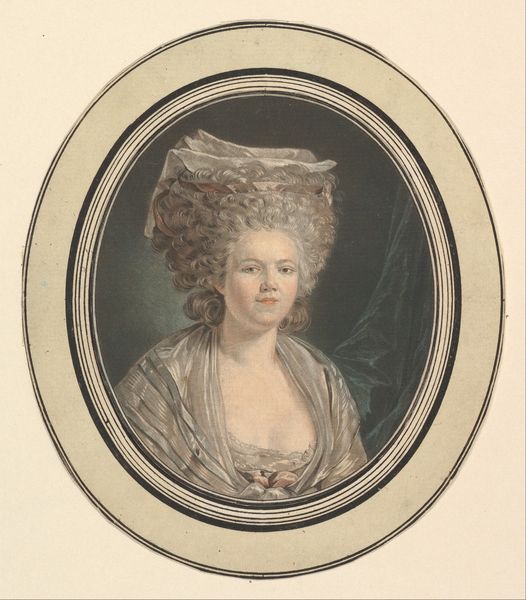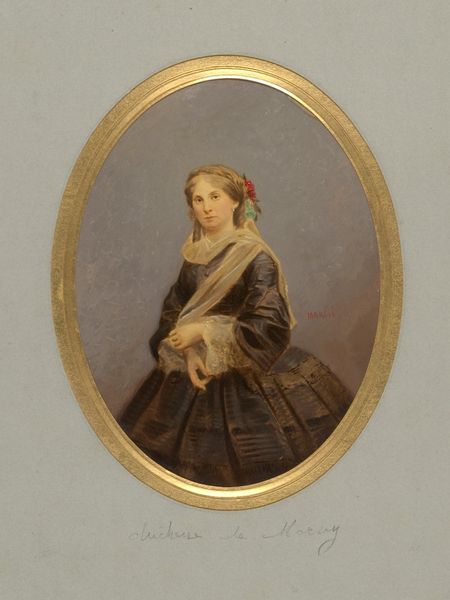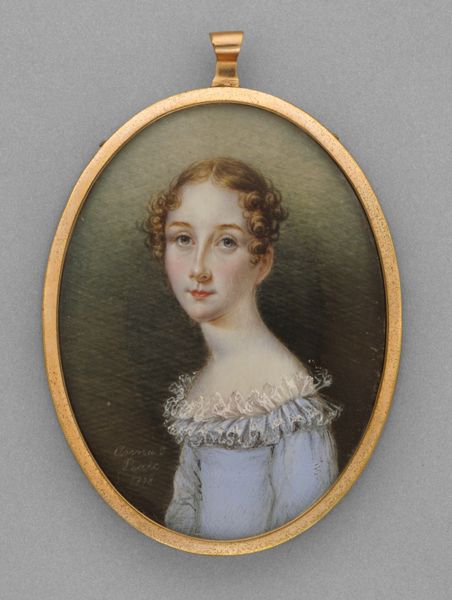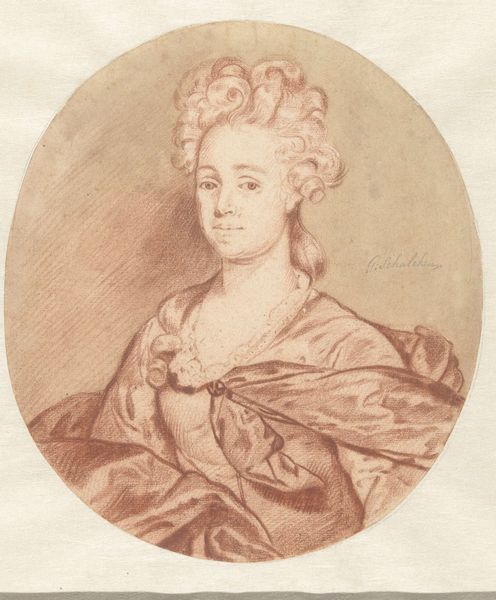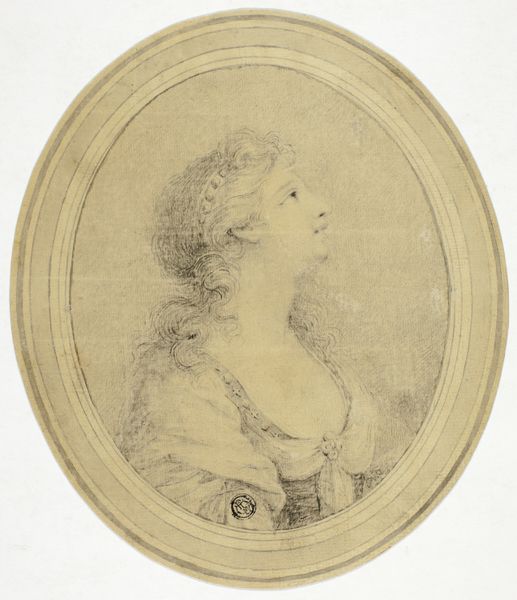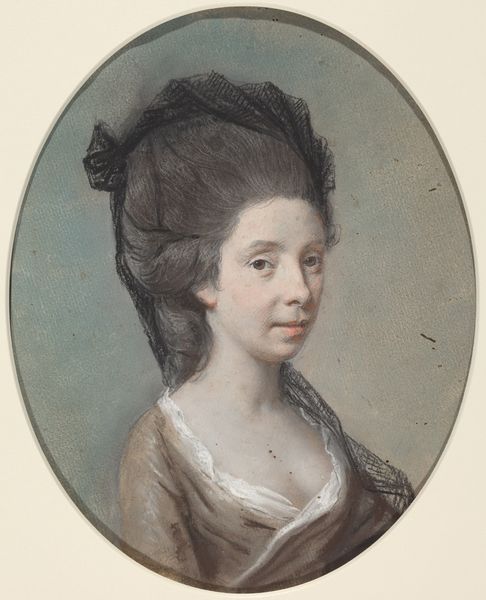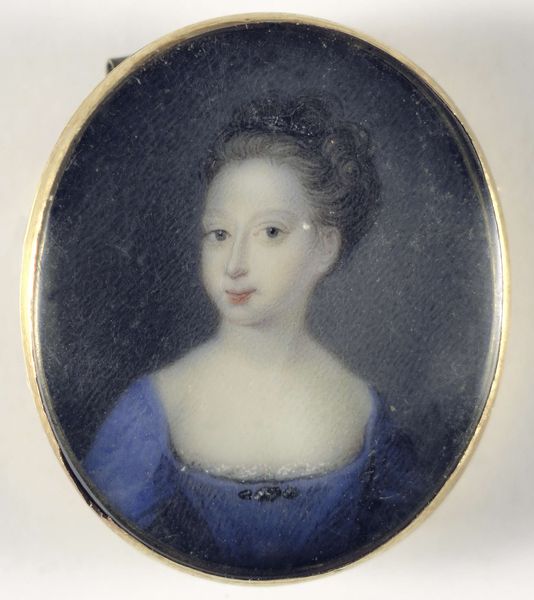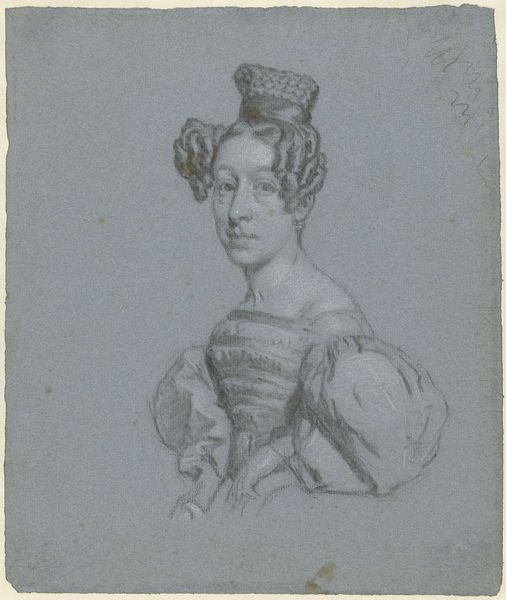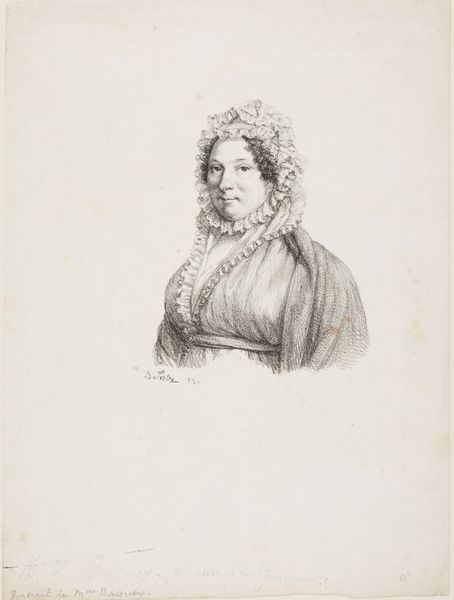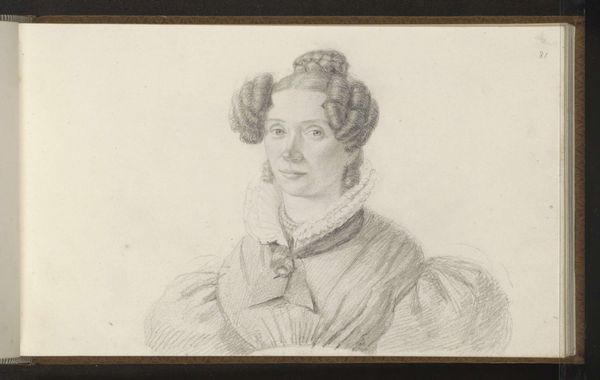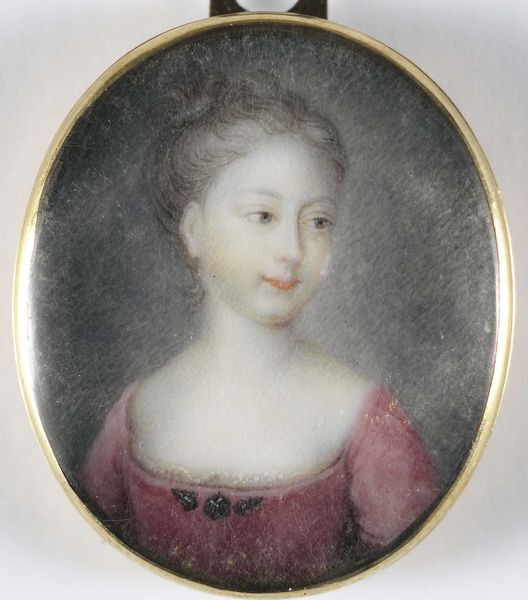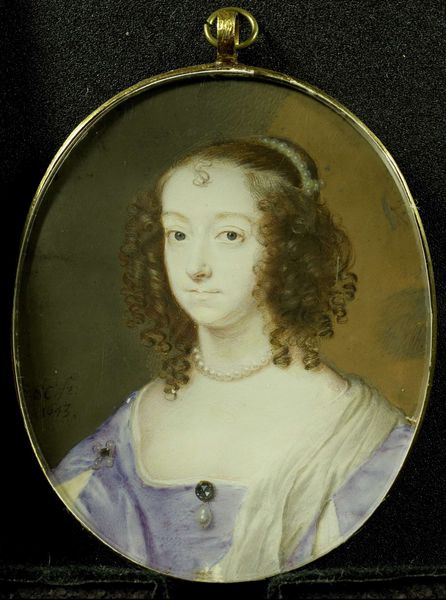
Anna van Hannover (1709-59). Zuster van Frederick Louis, Prins van Wales, en echtgenote van Prins Willem IV. 1735 - 1745
0:00
0:00
print, engraving
#
portrait
#
baroque
# print
#
engraving
#
miniature
Dimensions: height 8.8 cm, width 7 cm, height 10.3 cm, width 8 cm, depth 0.5 cm
Copyright: Rijks Museum: Open Domain
Editor: This is a print called "Anna van Hannover," dating from somewhere between 1735 and 1745. It’s a small, delicate engraving. I’m struck by the contrast between her refined appearance and the somewhat rigid formality of the portrait style. How do you interpret this work within its historical context? Curator: It's interesting you note the formality. This miniature portrait, likely intended for personal viewing, serves as a potent symbol of power dynamics. Consider Anna’s position: sister to a Prince, wife to another. This image isn't just about capturing her likeness; it’s about reinforcing and communicating her status within a highly stratified society. Do you think her agency plays any role here, or is it purely representational? Editor: I wonder to what extent she had control over how she was depicted? She's presented in a very specific, almost staged manner. Do you think this image served a purpose beyond simple representation? Curator: Absolutely. These portraits often functioned as tools of political and social maneuvering. Marriage prospects, alliances—all could be influenced by the carefully constructed image presented. The lace, the fabric, even her posture; these were all signifiers read by contemporary viewers. Considering feminist theory, how might we view this depiction of Anna within the confines of 18th-century expectations of women? Editor: It seems that everything, including her appearance, was dictated by her role. I suppose the artist was capturing her societal function as much as her physical form. Curator: Precisely. It raises questions about female identity during this era. It pushes us to analyze the ways in which women’s appearances and actions were shaped and constrained by prevailing social and political forces. These seemingly innocuous images hold fascinating narratives about power and identity. Editor: I see the piece in a different way now. It's less about the individual and more about the role that they play. Thanks for that deeper dive. Curator: And thank you for drawing attention to this fascinating, albeit constrained, representation of Anna and her place in history.
Comments
No comments
Be the first to comment and join the conversation on the ultimate creative platform.
